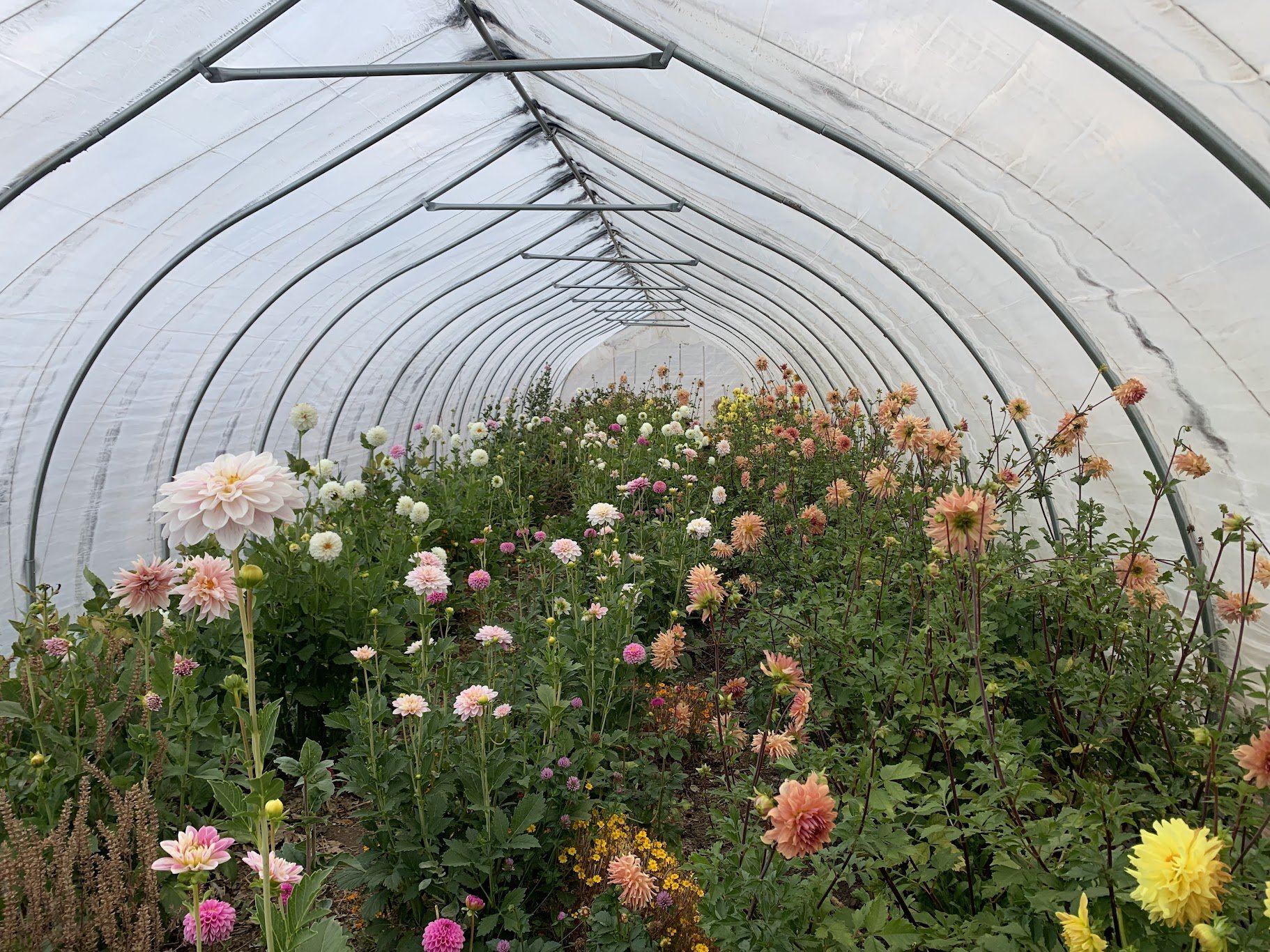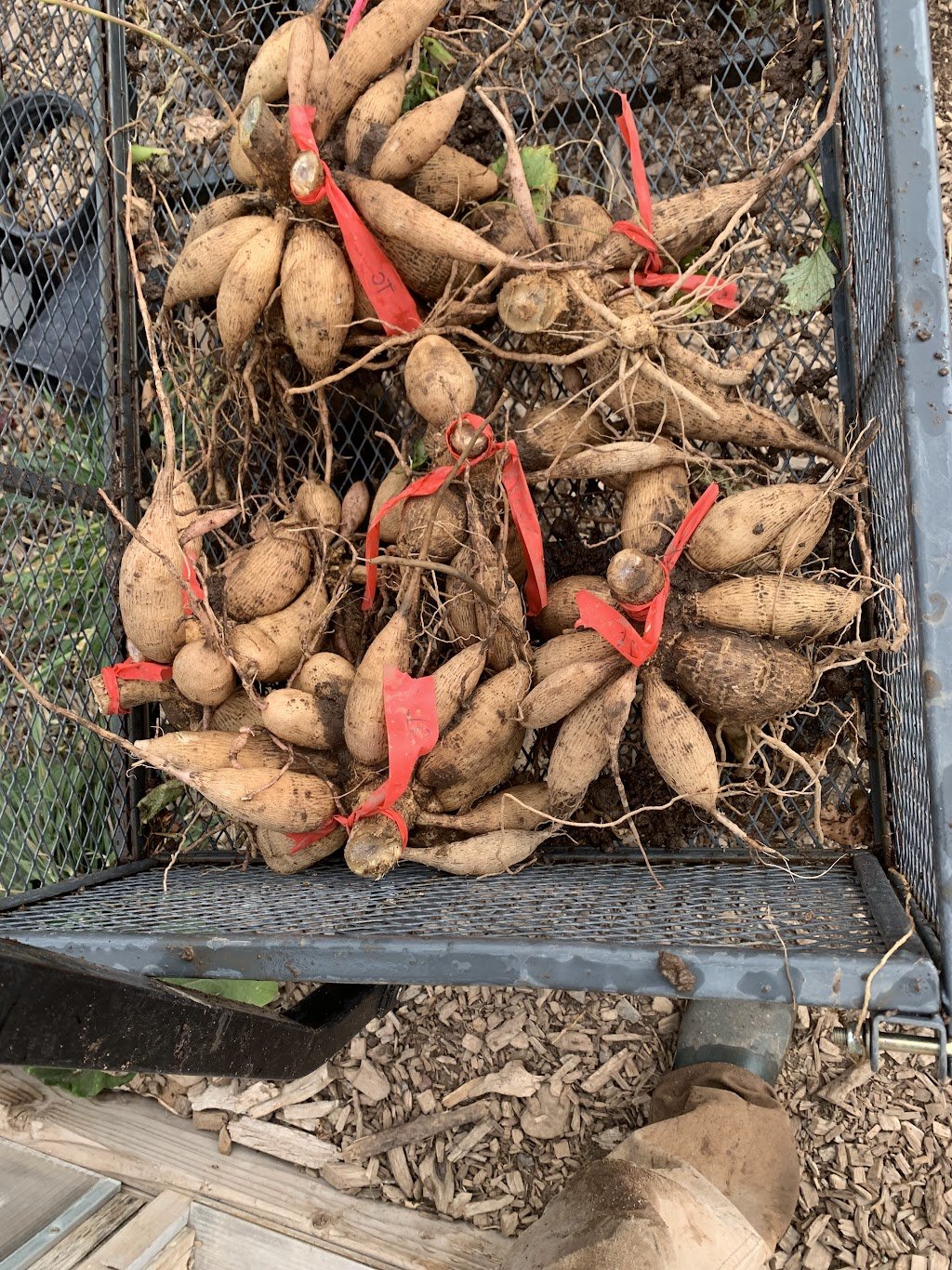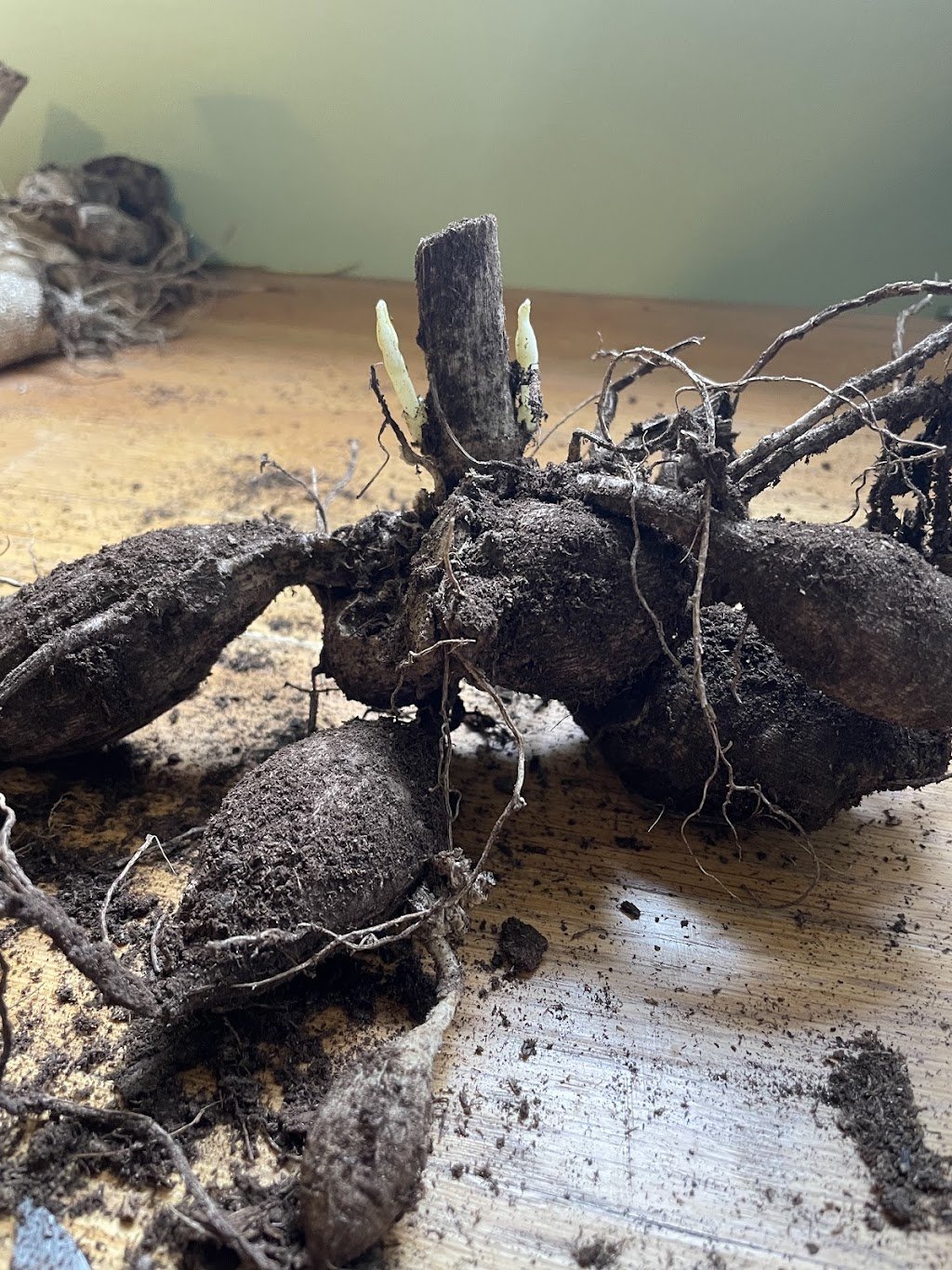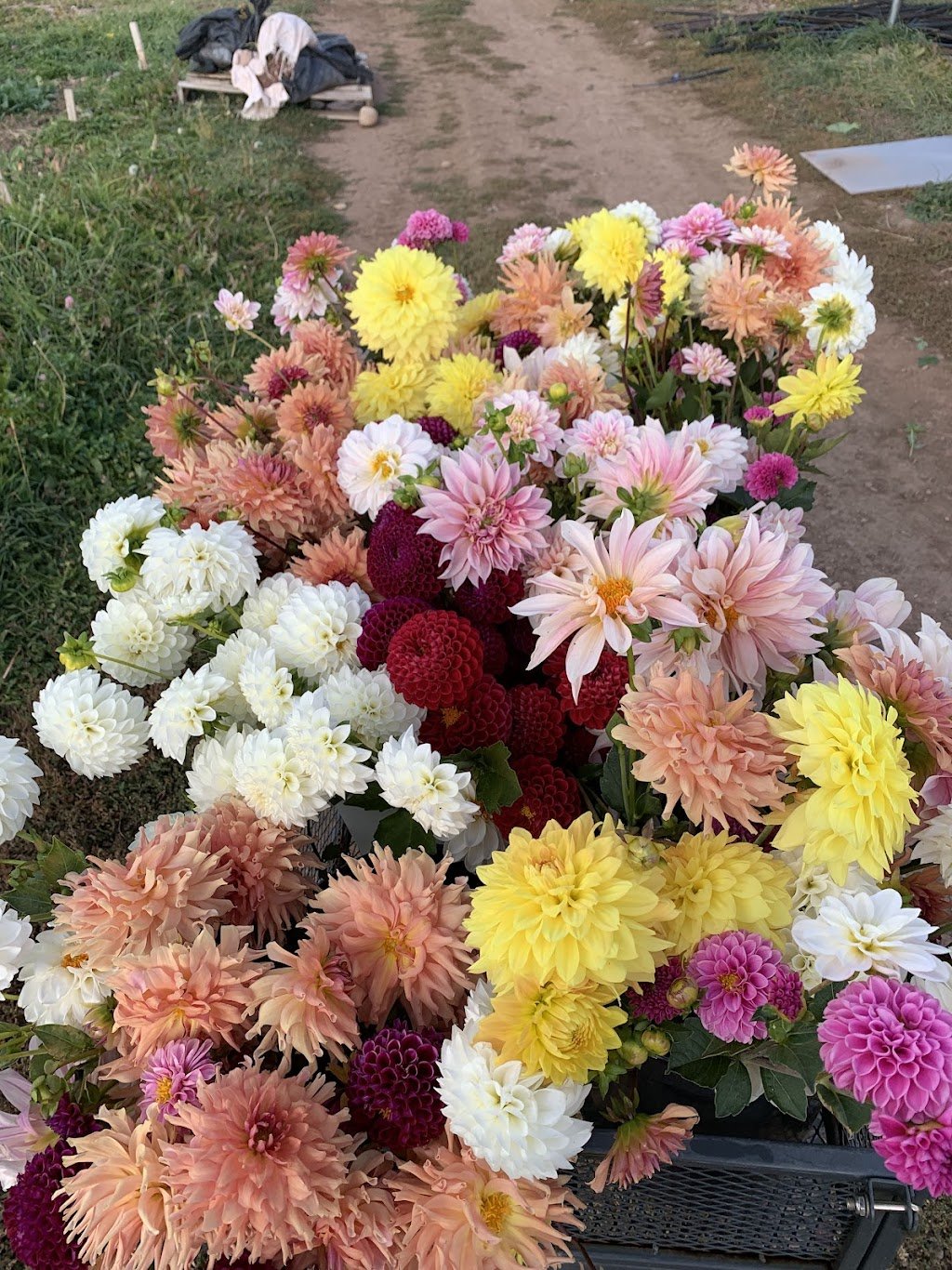Growing Dahlias
Dahlias grown at our local farm
Year after year at Juniper Farm, planting dahlias is one of the spring farming tasks that we most look forward to. Our cultivation of this vibrant crop begins at the end of each growing season when we can dig and store each plants’ tubers. Tubers are lumpy, bumpy, soil-coated roots the plants produce to ensure the next years’ crop. At our farm plot in Basalt, Colorado we store tubers out of the ground through the winter to ensure their viability for the next growing season.
We grow in an arid, high desert climate at about 6,000 ft of elevation. Our first fall frosts can come as early as mid-September, and this is our sign to start digging tubers. Once dahlias experience a hard freeze, their foliage changes in appearance from green and lively to black and dead. We wait for 2-3 days after this frost to ensure energy from the foliage is moved into the tubers. This provides a strong energy source for new plants to sprout from the following spring. Then, we dig generously around the base of each plant to unearth their tubers, giving plenty of space to avoid puncturing or slicing them.
Dahlia Tubers after they’ve been pulled from the ground.
With the tubers dug up, our next step is moving them into a space that is out of direct sunlight where they can cure. Curing is a process which allows the tubers to dry out and prepare for winter storage. We cure tubers for anywhere between 24 hours to a week before packing them into large plastic bags loaded with vermiculite and peat moss. These packed bags are what we will move into winter storage places.
Dahlias left in the Two Roots Farm prop house to dry.
Winter homes for our dahlia tubers have ranged from walk-in coolers (thank you, Two Roots Farm!) to empty barn space, to under the garage! Regardless of the actual site, we’re looking for an area out of direct sunlight, that will hover between 34º - 40º fahrenheit, and maintain a consistent level of moisture. Our super-dry climate mandates that we occasionally add water to bags of stored tubers through the winter to keep them happy and viable. However, this is not necessary in more humid climates.
In the spring, we take our tubers out of storage and prepare them for planting by sorting them for viability and then dividing the viable bunches. Viable tubers will have a neck, an eye, and a firm body. A dahlia’s neck is where the tubers connect to one another. The plant’s eye is where, once sprouted, the stem of the plant will grow from. Finally, a firm body means that the tuber has not rotted while in storage. If a bundle of firm tubers has more than one eye and can be divided while maintaining some neck for each bundle, it can be separated and planted as multiple plants.
The image above shows how defined the ‘eyes’ are.
With tubers sorted and divided we are ready to move on to planting! Dahlias take about a month to sprout once planted, so we aim to get tubers in the ground two months before the last spring frost. During the last month of frost threat, we rely on frost cloth to protect any young foliage that has developed since planting. When planting, we amend the bed with compost then dig holes about 8 inches deep, wide enough to fit each bunch, and spaced 12 inches apart. We add fertilizer, place the tubers, and do a deep water. Then, we don’t touch them again until they’ve sprouted!
Early Spring Dahlia foliage
We love dahlias because they are a gift that keeps on giving. They remind us of the bounty of each season and mirror the rhythm of our work, year after year. Our dahlia MVP at Juniper Farm is the Terra Cotta variety and we adore it for a few reasons…
It’s one of the hardiest varieties, producing vigorous plants and tubers each year.
It’s color, shape, and texture are so fun to work with. We love brining these florals into our floral studio and using them to create wedding flower arrangements. The terra cotta works in almost all of our favorite color palettes and is a great focal flower for wildflower weddings, boho wedding florals, and even as an accent for white wedding florals.
We have had this tuber variety in our collection for years! It’s been with our garden and farm since the very first year I farmed in the Roaring Fork Valley (2019) and somehow we have managed to successfully dig, store, and keep this entirety of our small farms lifespan!
Dahlia harvests
Blog Post Authored by: Tess Beadrell





